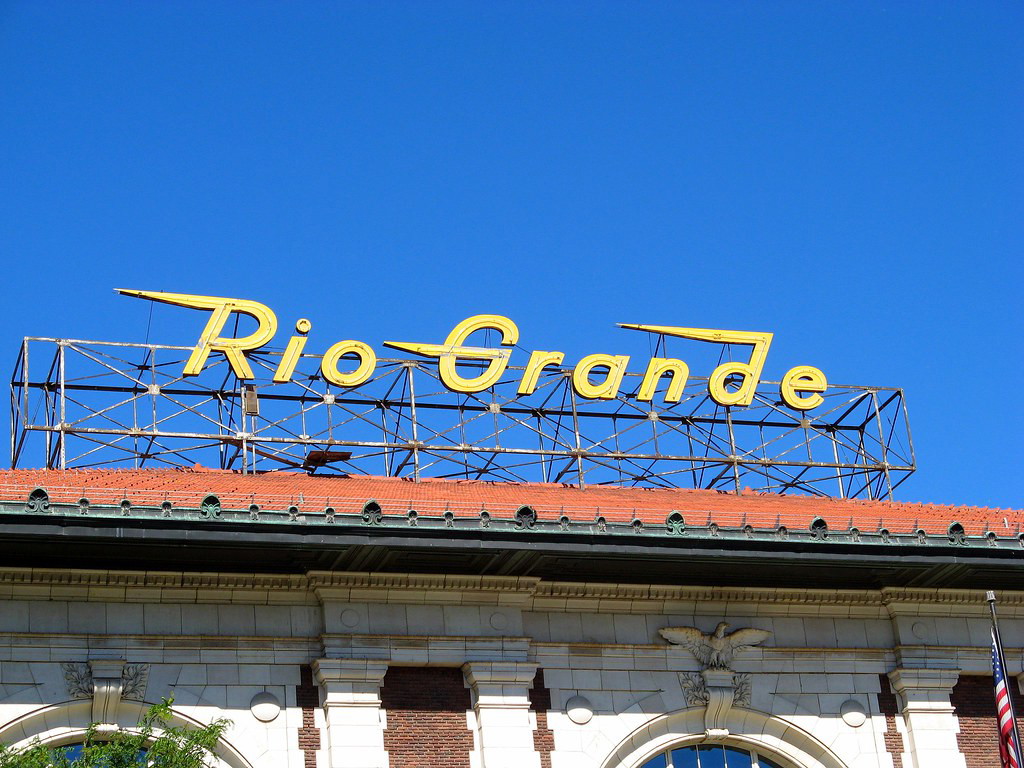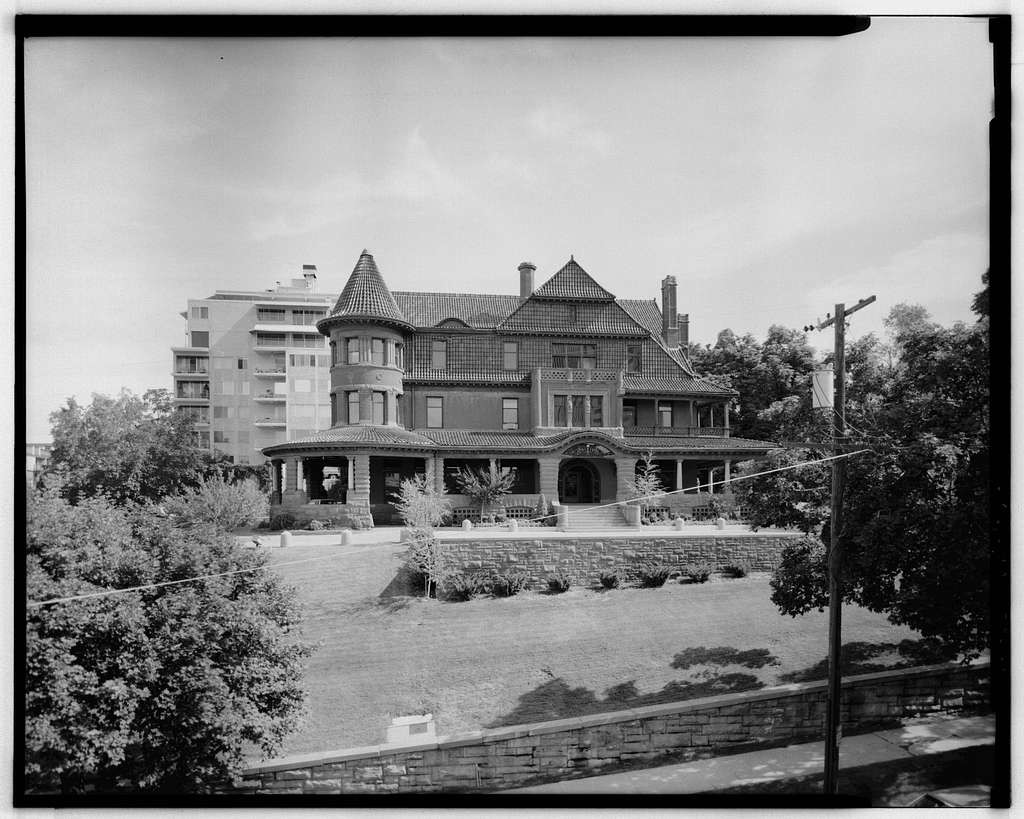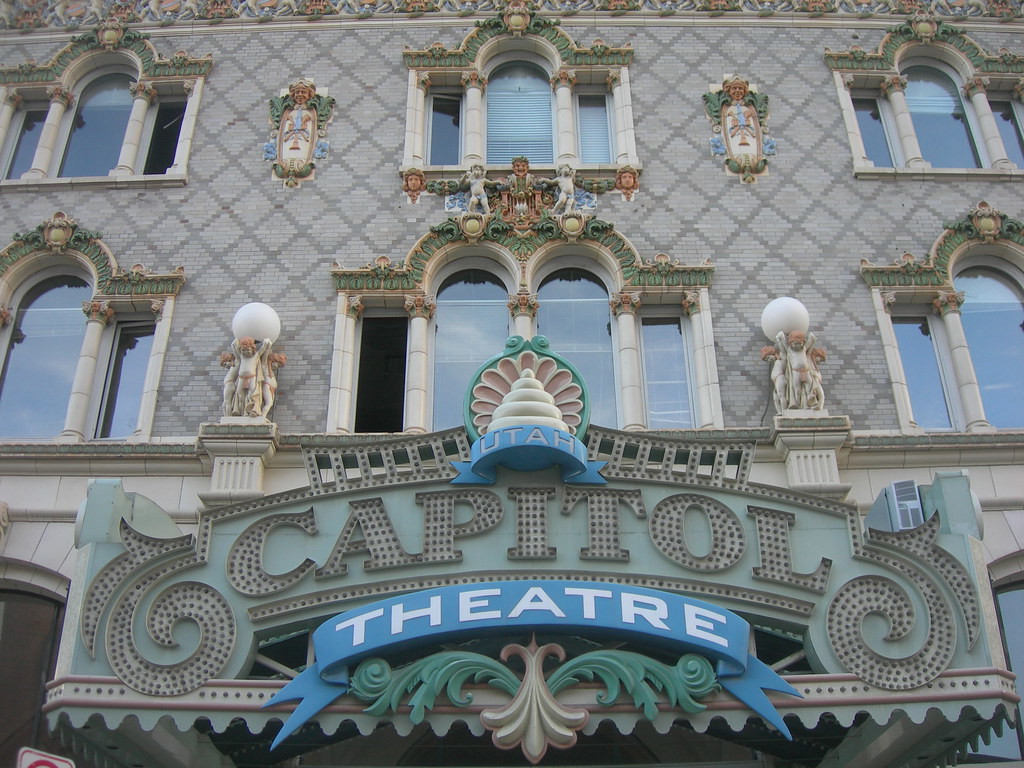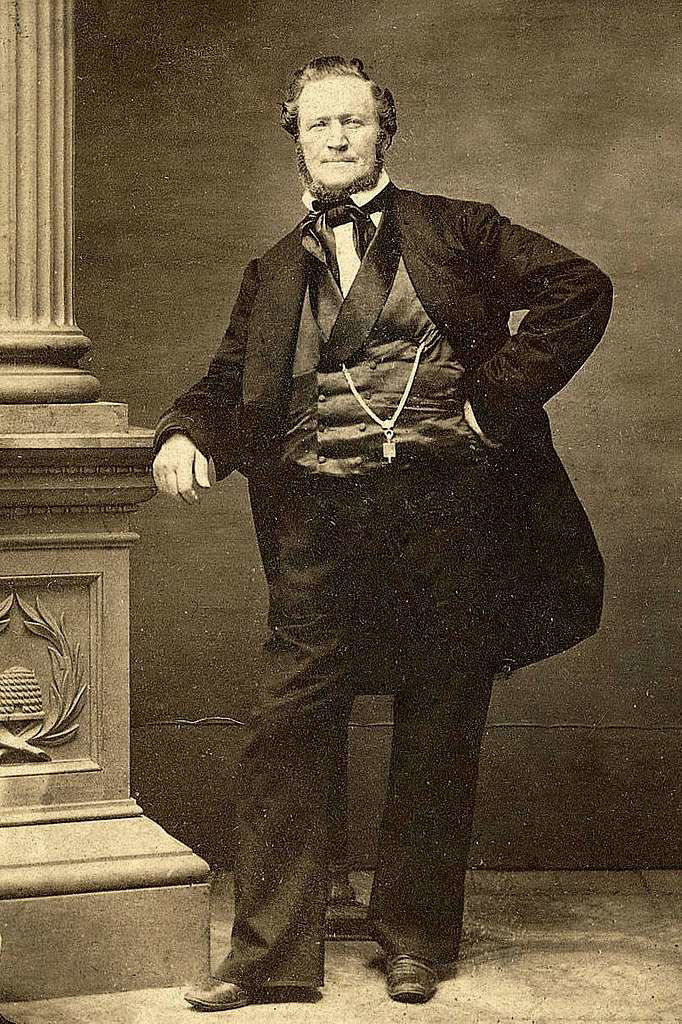Top 10 Most Haunted Locations in Salt Lake City
A remote desert settlement founded on the backs of those escaping persecution and searching for religious freedom. Salt Lake City, Utah’s ghosts reach out from this dangerous past to tell the city’s history.
The Mormons who founded the city breathed their way of life into it. Their code of law, way of life, and hard-working mindset grew the city by the Great Salt Lake into the beautiful metropolis seen today. But it wasn’t without its fair share of disaster and ruin.
Drought, pestilence, and danger lay around every corner in the secluded lake settlement. The hardships and suffering experienced by the trailblazers created a hotbed of otherworldly activity for The Crossroads of the West.
The tragedy continued when the mining operations at the turn of the 20th century brought many men to their knees and even their graves. As beautiful a city as Salt Lake City has become, its gorgeous aesthetics mask a history of pain and despair. One that continues to haunt the residents, reminding those who walk their grounds of the torment they once faced.
Read on and next time you are in Salt Lake City, take a tour with US Ghost Adventures!
The Utah were some of the early Native peoples who inhabited the desert plateaus and the Great Salt Lake before European colonization. Their lore plays a part in some of the high strangeness found in the state. The legend of the Skinwalkers is well known throughout the area.
1. Rio Grande Depot
Built in 1910, the Rio Grande Depot helped expand Salt Lake City into the larger metropolitan area today. The Depot functioned as a departure and arrival point for passengers heading out West to find their fortune, and for others returning with their heads hung.
Salt Lake City was pulled into the furor of the late 1800s that was the Gold Rush. The Rio Grande Depot helped to facilitate the dreams of money-hungry Americans and the expansion of the city. Designed by Chicago-born architect Henry Schlack it stands as a testament to this bourgeoning era.
It cost $75,000 to build, the equivalent of $20 million in modern currency, and touts a French Renaissance/Beaux Arts design. Its trademark neon sign was installed in the 1940s and would continue to light the way for travelers for many years, servicing Amtrak trains from 1986 to 1999.
Today it houses a variety of establishments including the State Historical Office, the Utah Historical Research Center, The Rio Grande Gallery, and the Rio Grande Cafe.

Source: Flickr
Why is The Rio Grande Depot Haunted?
The building still sees its fair share of visitors on a daily basis. But many that stop by the cafe for a quick cup of coffee, end up leaving with a spooky story to tell.
As legend has it, The Purple Lade and her fiancé had an argument in the early days of the depot. Lost in a rage, she tossed her engagement ring onto the train tracks.
Realizing the severity of what she had done she jumped down onto the tracks to retrieve it. Unfortunately, this was at the exact moment that a westward-bound train was pulling into the station.
The Purple Lady lost her life that day, and the magnitude of her horrendous death would keep her wandering the Rio Grande Depot, sadly, for all eternity.
Hauntings at The Rio Grande Depot
- Faucets turn off and on in the women’s restroom
- Lights continuously flicker on and off
- Sightings of The Purple Lady appearing to be angry or upset
- Disembodied footsteps are heard in the lobby
- Basement alarms are triggered frequently
- Music is heard with no point of origin
2. Salt Lake City & County Building

Photo property of US Ghost Adventures.
One of the most recognizable buildings in Salt Lake City, The Salt Lake City and County building has left visitors and residents in awe of its grandeur since its construction in 1894.
The finest example of Richardsonian Romanesque architecture in Utah, it was designed with the intent to tell the story of Utah. Along its wall are sandstone carvings of Native American Chiefs, Spanish explorers, and the early Mormon women that settled in the area – those who helped shape the city and state known as Utah today.
Many are also left bewildered by the strange unexplained events experienced in the old building.
Only Terror in The Building
Though the numerous accounts of unexplained activity would leave one to believe there are a plethora of spirits residing in the building, there are three distinct apparitions that are known to visitors and staff members.
It’s said that during the construction of the building, two children fell to their death and are believed to haunt the third floor. One young worker went up to the floor with some family members. Upon unlocking the door they all heard the sounds of little children laughing, followed by footsteps running down the hallway.
Workers at City Hall often report the feeling of being touched when no one else is around. On the fifth floor, mysterious singing is heard echoing through the hallways.
The same worker once heard the sounds of typing come from an office room. Believing it to be a co-worker who was working late she looked inside.
No one was in the room and the typing suddenly ceased.
3. Devereaux Mansion

Source: Granger Photography
One of the last remnants of Salt Lake City’s early development period lies on the far side of town, in what was once used as agricultural lands by the early Mormons.
The Devereaux Mansion was built by William C. Staines, one of the first settlers and prominent members of the Church Of Latter Day Saints. He sold the house to Joseph Young, son of the early Church of Latter-Day Saints leader Brigham Young, in 1865.
In 1867 it was sold to William Jennings, Utah’s first millionaire and mayor of Salt Lake City between 1882-1885. Jennings amassed his large fortune by bringing the railroads to the desert city and through a plethora of mercantile investments.
It was sold after his death in 1886 and stood as an oddity in the developing neighborhood. It served as an alcohol treatment center for quite some time and was eventually bought in 1979 by the state of Utah for $1.
A fire ravaged the house shortly afterward but it was restored and purchased by the Church of Latter-Day Saints for $900,000. They currently use it as a meeting space for various offices and archeological digs commonly take place on the site.
Who Haunts The Devereaux Mansion?
It seems these sites have disturbed some past residents, for the house is noted to be haunted by the spirits of various former tenants. Some of them were reported as early as 1959 and likely have been waiting quietly there for some years.
There is the spirit of a young girl, who is believed to be Williams Jenning’s daughter. She plays tricks on those in the house but seems to be a peaceful spirit.
She stands in stark contrast, however, to the spirit of an older woman that angrily roams the house. It is believed that she is an old housekeeper who is rather aggressive. It’s said that she becomes agitated when the mansion is not kept in order, taking out her aggression on anyone in her sight.
While there is no explanation as to why these spirits continue to reside in the home, it’s safe to say they may not be leaving any time soon
Haunted Happenings at The Devereaux Mansion
- Doors slamming shut on their on
- Cold spots felt throughout the house
- Items being thrown about the house
- Singing and humming from the little girl’s spirit
4. The Gentle Millionaires Alta Club
William Jennings may have been the first Millionaire in Salt Lake City, but he was far from the last. As the city’s economy developed due to the gold rush and the railroads, more and more wealthy businessmen began to appear.
In 1883, 81 of these gentlemen proposed the formation of a club “to present the comforts and luxuries of a home together with the attraction to its members of meeting each other in a pleasant and social way,” molded after the Union Club in San Francisco.
It was called the Gentle Millionaires Club because “gentiles” or those not of the Mormon faith were the only ones allowed to join. This changed in 1885 when Mayor William Jennings was allowed to join.
The club became a speakeasy of sorts, for those who could afford it, during the prohibition era. Women were banned from taking part in the club until 1987 and are still a part of it today. During the 2002 Winter Olympics, it was used to house French Delegates.
Why is the Gentle Millionaires Alta Club Haunted?

Photo property of US Ghost Adventures.
Along with all its accolades and glamorous history it is known around the city to be incredibly haunted. One man’s afternoon nap in the 1950s led to disaster for the building and an untimely end for this sleepy millionaire.
Falling asleep with a cigar in his mouth, this gentleman nearly burned the entire building down. Remnants of this accident can still be seen above the third-floor windows.
He was the only one who died during the disaster and his spirit seems to lurk around the building to this day.
Apparitions of a man in a 1950’s style suit are commonly seen where he fell asleep and unidentified cigar smoke can be smelt in the same area. Then there is the spirit of the “Lady of the Evening.” She can be identified by the smell of lilac perfume wafting through the room.
Though her origin is unknown, it appears she’s keeping the man company in the afterlife.
5. McCune Mansion
One member of the Millionaires club, a man named Alfred McCune built yet another haunted turn-of-the-century mansion in Salt Lake. The McCune mansion is noted for the varied materials and decor used in its construction.
They originate from all around the world and include Utah Onyx, Nubian Irish Marble, Dutch roof tiles, German mirrors, Russian leather, French tapestries, and South American mahogany.
The mansion is considered to be one of the finest 20th centuries homes in the nation. Railroad tycoon and entrepreneur Alfred McCune built the home for his family and his wife Elizabeth in 1898.
By 1901 it was finished with an impressive price tag of $1 million, allowing the home itself to be a part of the millionaires club. The family moved to Los Angeles in 1920 at which point the house was bought by the Church of Latter Day Saints.
It was then turned into the McCune School for Music until it was rebought by McCune associates in 1973. It now operates as a wedding and event space.

Source: Gary Stock Bridge
Ghostly Residents of the McCune Mansion
Much like the other early 20th-century homes constructed during Salt Lake City’s boom period, this magnificent mansion is also haunted. Many of these hauntings began after the major renovations done by Phillip McCune in 1999.
Alfred’s wife Elizabeth is said to haunt the kitchen. She moves around dishes, pots and pans, and anything she can get her hands on.
Music comes from a hidden alcove on the third floor, lights do odd things and cold spots are frequent. Apparitions of a young girl have been spotted on the 3rd floor. She is seen dancing through the rooms, an ode to the days when the building was used as a dance studio.
One electrician reported seeing the apparition of a girl emerging from a mirror on the first floor. She briefly looked around, decided everything was to her liking, then vanished back inside the mirror.
Needless to say, the electrician never returned to that job site.
6. Shilo Inn

Source: Wikimedia Commons
Once known as the “ugliest building in Salt Lake”, the Shilo Inn – now a Holiday Inn – has an equally as ugly history.
The Shilo was built in 1974 and was designed as a gaudy yet, seemingly normal hotel. Its nickname comes from the thin strips of neon lights that ran along its exterior, outlining the shape of the hotel in a boxed veil of Las Vegas glitz and glamor.
All was normal at the Shilo until the greatest tragedy in modern Salt Lake City history occurred.
Horror Strikes The Shilo
On August 3rd, 1978 a woman named Rachel David threw seven of her children off the 11th-floor balcony before throwing herself off.
She was the wife of Charles Bruce Longo, better known as Immanuel David. David, an ex-communicated member of the Church of Latter Day Saints, claimed he was a direct descendent of the biblical David. He created a cult called the Family of David that operated in Salt Lake for many years.
In May of 1977, he and his family began living out of the Shilo, paying about $100 a day to do so. On July 31st David took his truck out into the mountains and committed suicide via carbon monoxide poisoning.
After his wife received the news she believed her only way out of the situation was much the same. Only one of her children survived the fall. Three died on impact, while the other passed in the hospital shortly afterward.
The tragedy of that fateful day solidified the Shilo’s reputation as a hideous site, as even its bright lights couldn’t shine through the dark clouds that hung over this hotel. And though it operates as a popular chain, the spirits of the building’s horrifying past continue to inhabit the hotel, walking amongst guests and making themselves known any way they can.
Hauntings of the Shilo Inn
- Disembodied laughter can be heard on the first floor
- The pinball machines operate on their own
- The boiler room on the 13th floor is a hotbed of activity
- Tools move on their own
- Light bulbs are unscrewed on their own
- The spirits of the children are said to play other tricks on the maintenance men
7. Capitol Theatre

Source: Flickr
There are many aspects of Salt Lake City that draw in tourists by the thousands with one of them being the historic buildings that add to the city’s prestige.
One of those buildings is the Capitol Theatre – the haunted Capitol Theatre.
The Capitol Theatre brings spectators far and wide in to witness Broadway plays, Opera, Ballet, and other forms of entertainment. Built in 1913 in the Ecole De Beaux Arts style that was popular at the time it was originally part of the Orpheum Theatre chain that was blossoming around the country.
It was renovated in 1927 to adapt to the motion picture craze that was sweeping the nation. By 1976 it was remodeled back to its original form and is regarded as one of the finest theaters in the state of Utah.
Though designed to be strong and sturdy, its fireproof walls would prove to be useless.
Why is The Capitol Theatre Haunted?
During a matinee performance in 1949, a fire ripped through the building. 600 attendees made it out of the theatre safely. Unfortunately, there was one poor soul who didn’t make it out.
A young 17-year-old usher named Richard Duffin was killed in the process of helping attendees escape. Many believe that he’s yet to leave his post.
The usher’s spirit appears to be harmless. Throughout the years, the staff members have reported a variety of unexplained activities. Security guards have reported locking up at night only to find the lights are back on and doors are unlocked. They’ve also reported hearing disembodied voices and footsteps.
The theatre’s infrared security monitors have also been known to pick up movement in the seats when the theatre is completely empty. In one instance, a security guard watched the cameras as what appeared to be a person got up from a seat and quickly streaked across the room.
One security guard experienced such an incredible amount of paranormal activity that his story was featured on an episode of Paranormal Witness. And tt seems there might be other spirits inhabiting the building.
Witnesses claim to have seen shadow figures along the wall as well as the apparition of a woman dressed in early 1900s clothing. Because of this, paranormal investigators are regulars at the theatre, constantly in search of who else might be keeping poor Richard company.
8. Westminster College

Source: Wikimedia Commons
Built in 1875, Westminster College is one of the finest liberal arts colleges in the state of Utah. While the Mormon-based Brigham Young-Provo is more well known, the smaller and nondenominational Westminster has provided quality education for young minds for 150 years.
With a history this old, there is no wonder that it is considered the most haunted college in Utah. When it was founded it was known as the Salt Lake Collegiate Institute before its name was changed to Sheldon Jackson College in 1897.
In 1902 the college was renamed Westminster College and, in 1911, moved to its present location. By 1949 it was a fully accredited four-year liberal arts institution.
The Lady in White
Throughout the many halls and buildings of the college are the spirits of former students and others who tragically lost their lives here. Perhaps the most famous is the lady in white.
The college hosted weddings in years past. A young couple got married in Gunton Memorial Chapel before tragically dying in a car accident on the way out to their honeymoon. The bride now roams the last place she was truly happy and is often seen in Converse Hall.
Security guards have reported lights turning on and off when everyone else has gone home and the building is locked. One young student heard odd scratching from the offices on the top floor of Converse Hall. When he went to investigate, he was met by a three-foot-tall shadow figure.
Likely not the Lady in White but something far more sinister. Then there is the ghost of Hogle Hall, believed to be a young boy whose apparition is said to have no legs! Security guards and students have seen him and heard his laughter through the large building late at night.
9. Fort Douglas

Source: Library of Congress
While Utah, a landlocked state surrounded by desert, seems an unlucky place to find Civil War history and landmarks, it too played a part in the extraordinary American squabble. Fort Douglas was established in 1862 and was used by the military until the 1990s. Today, it’s the oldest of all military forts in Utah.
Named after then-recently deceased Illinois Senator Stephen A. Douglas, Fort Douglas was initially run by volunteers from nearby Nevada and California. It was mainly used to watch for secessionist activities in the West and ward off any Native attacks in the still-developing area.
Its location, on an overlook above Salt Lake City, gave it a key advantage for these activities. It was used as a training base during the Spanish American War and World War 1. Then during World War 2, it transitioned to a POW camp. Officially closing in 1991, it now operates as a military museum and has done so to some degree since 1975.
The Ghosts of Fort Douglas
Their most famous spirit is that of a former soldier. He gained the nickname “Clem” from a boy scout troop that spent a terrifying night here in the early days of the museum’s foundation. Full-bodied apparitions have been reported on multiple occasions.
He is described as a stocky soldier dressed in a Civil War-era federal uniform. Many feel his breath upon their neck late in the night. Strange noises are heard throughout the old fort, and many objects mysteriously move on their own. It is believed he may have been one of many soldiers that committed suicide here.
There is also the spirit of a woman who committed suicide here in the 1930s and tends to haunt the service elevator. A young girl’s spirit haunts the Humanities House, and many see her disembodied head floating in the building.
The nearby Fort Douglas Cemetery also has its fair share of ghosts. It holds the bodies of prisoners of war from Germany and Japan, people who were held as enemies of the state and likely treated accordingly. Their tormented souls still roam the cemetery to this day.
10. Brigham Young Farmhouse
It is said that Brigham Young, the founder of Salt Lake City and the first Governor of Utah, haunts this building. The second leader of the Church of Latter Day Saints, succeeding founder Joseph Smith in 1847, this stucco farmhouse was the central building of his massive farm colony.
Built-in 1863, it became a central meeting place for the early Mormons that settled in the area. Social events, musical performances, and religious meetings were often held here. It was part of a larger 600-acre farm used primarily as a dairy farm to sustain the newly founded city.
Young died in 1877, and various church members bought the home throughout the years. In 1950 Mr. and Mrs. Frank Wilcox bought it and, upon realizing it belonged to the founder of their religion, began restoring it, eventually giving the home to the church.
Today, after being moved to its current location in 1975, it is utilized as a museum where early settler life recreations occur within This Is The Place Heritage Park. It still operates as an active dairy farm.
Why the Brigham Young Farmhouse is Haunted

Source: Jenikirby History
When the Wilcoxs moved in, they sensed something was amiss. Gwen Wilcox was an accredited psychic in the Salt Lake City area. The two began getting to know the spirits that resided within the home.
They stated that they were in direct contact with Young and that he instructed them to restore the home. He is often seen in the front room with a cane and one foot on a stool.
Another spirit is that of Ann Eliza, Young’s 19th wife. The state of Utah outlawed polygamy in the late 1890s, but up until then, it was common practice for Mormon men to have multiple wives.
She despised her time as wife number 19, eventually writing a book on the matter and touring the country, promoting it and denouncing Mormonism. It is said that she is a helpful spirit and has been seen looking out the living room window, continuing her righteous rally against the church.
Discover a Darker Side of The Crossroads of The West
Salt Lake City, Utah, is more than Mormonism and half-proof liquor. The desert city survived despite persecution against those who founded it. The railroads brought gold-hungry settlers to the area, which expanded it at a rapid rate. Many of them never left.
Like any other city, tragedy has struck here in various forms. If it’s a spiritual journey you seek, look no further than the city by the Great Salt Lake. Next time you visit Salt Lake City be sure to take a ghost tour with US Ghost Adventures for the full experience!
Sources:
Featured Image Source: Pxfuel.com
https://www.globeslcc.com/2019/10/31/rio-grande-depot-salt-lake-city-hauntings/
https://www.theclio.com/entry/99089
https://www.hauntedrooms.com/utah/salt-lake-city/haunted-places
https://www.globeslcc.com/2021/10/26/5-most-haunted-places-salt-lake-city/
https://jacobbarlow.com/2019/10/11/salt-lake-city-and-county-building/
https://www.deseret.com/utah/2022/9/1/23300540/devereaux-mansion-utah-haunted-house
https://www.altaclub.org/history
https://www.mappingslc.org/this-was-here/item/116-the-alta-club
https://utahhistoricalmarkers.org/c/slc/mccune-mansion/
https://mccunemansion.com/our-story/
https://www.slchistory.org/2022/10/the-mccune-mansions-haunted-history.html
https://buildingsaltlake.com/the-infamous-shilo-inn-is-getting-a-facelift/
http://hauntedhouses.com/utah/shilo-inn/
https://www.onlyinyourstate.com/utah/david-family-suicide-ut/
https://archive.sltrib.com/article.php?id=54717615&itype=cmsid
https://utahtheaters.info/Theater/History/69/Capitol-Theatre
https://westminstercollege.edu/about/alumni/the-review/2018-fall-review/stories-tell-dark.html
https://backpackerverse.com/westminster-college-ghosts/
https://www.legendsofamerica.com/ut-fortdouglas/
https://www.slc.gov/district6/tour-district-6/fort-douglas-2/
http://hauntedhouses.com/utah/brigham-young-farm-house/



